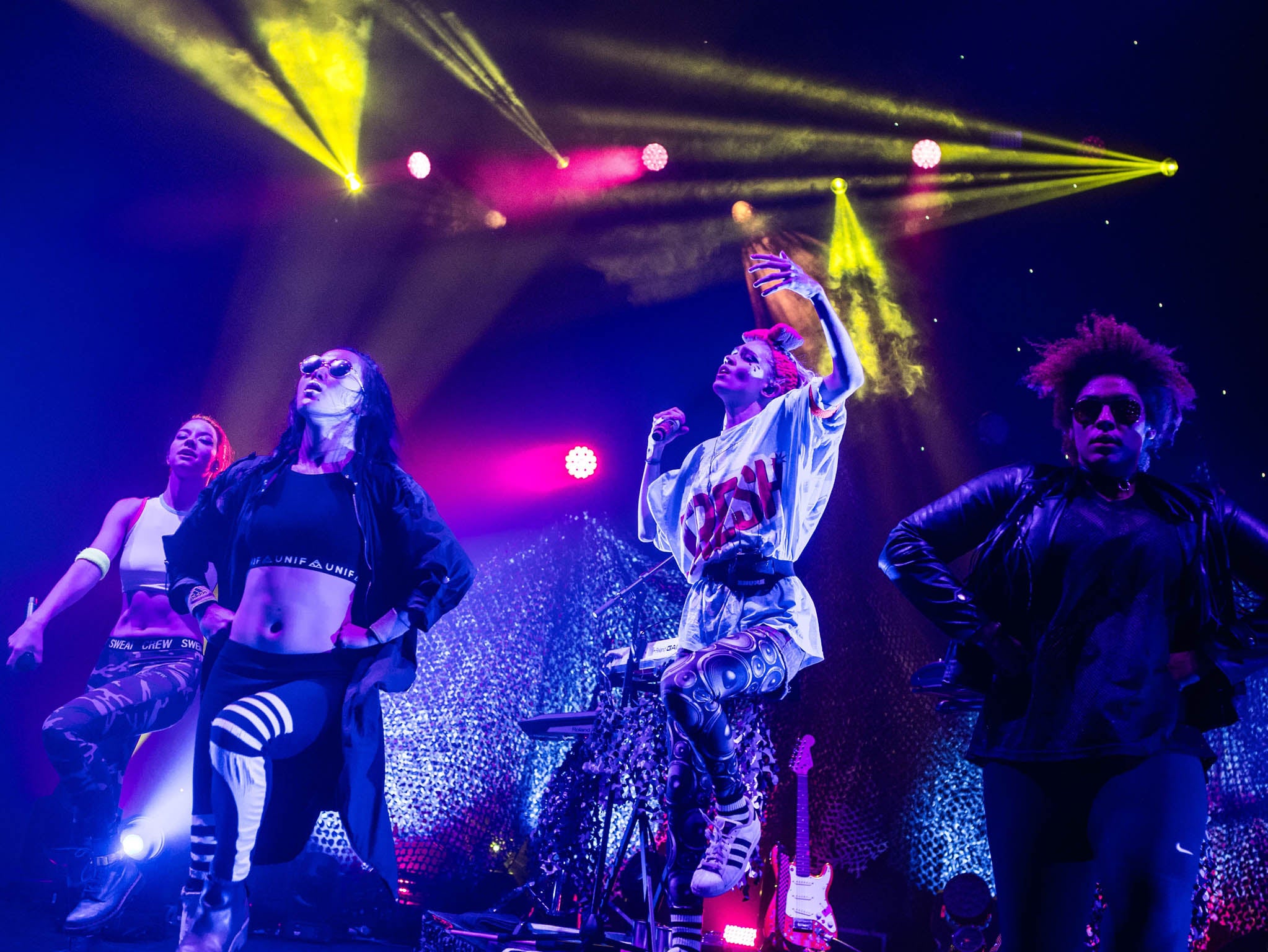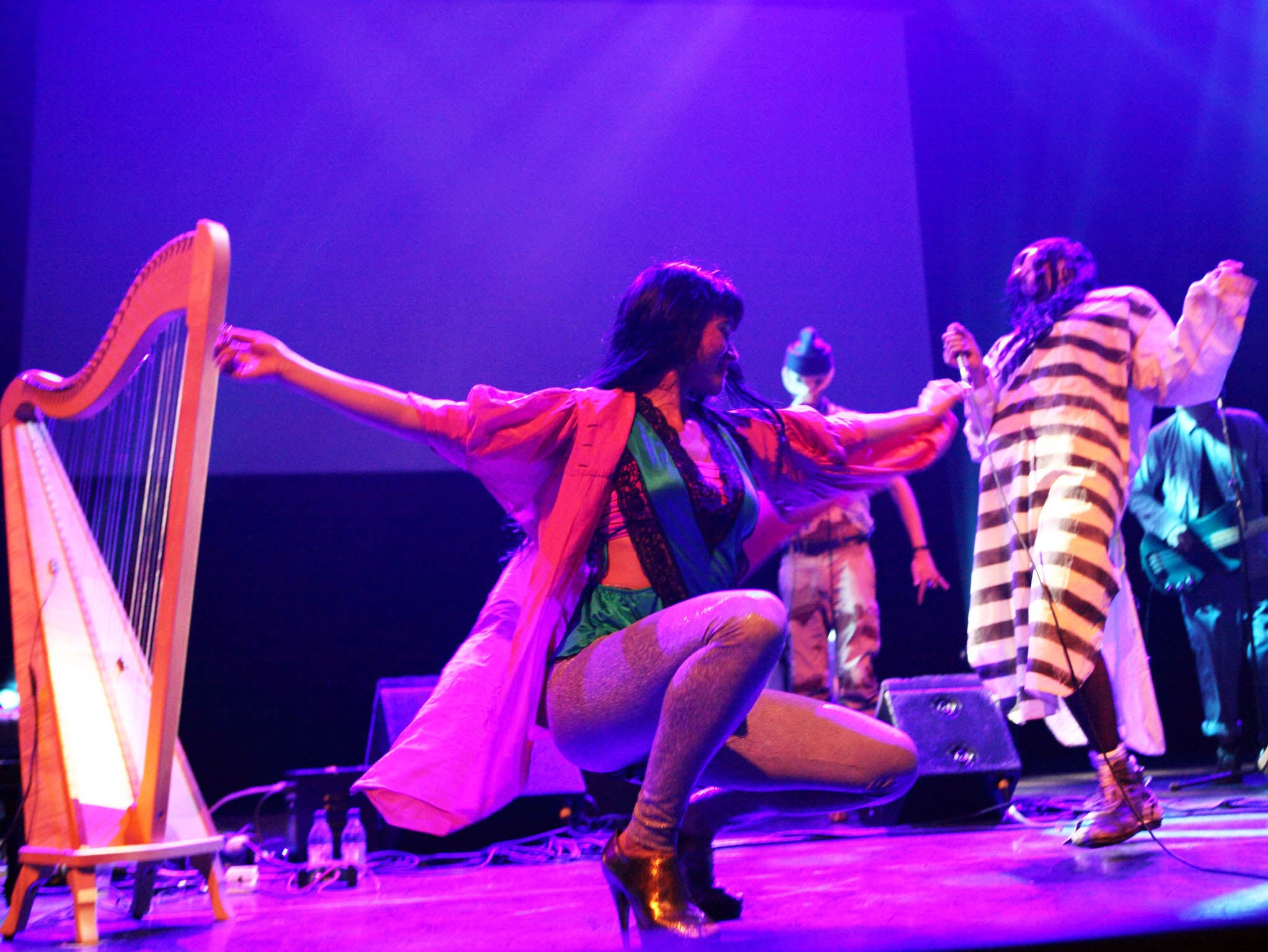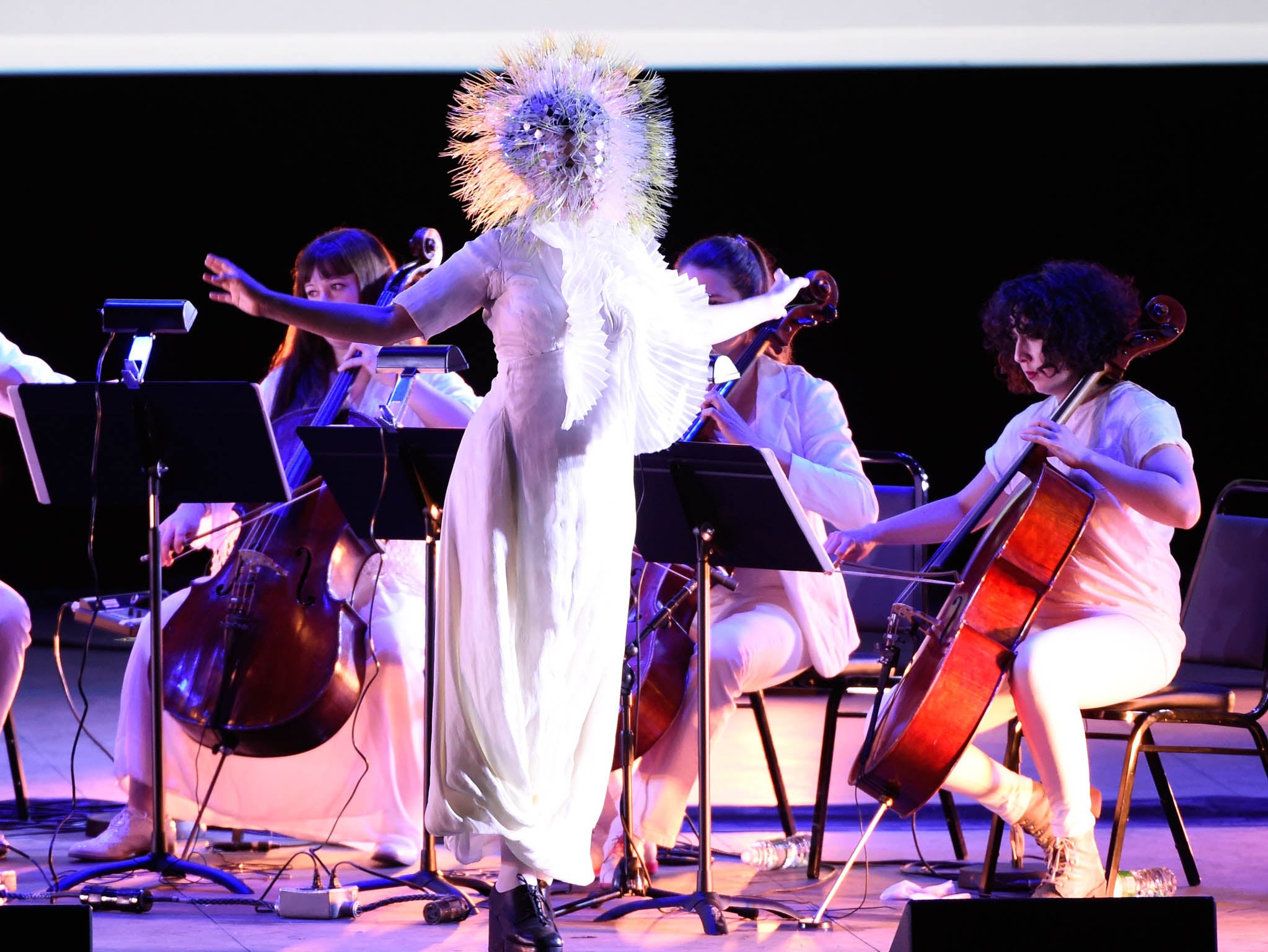How female artists are turbocharging their live shows from CocoRosie to Lady Gaga and Taylor Swift
As artists seek to maximise revenue by pushing their shows to the next level, women are taking the lead in creating unmissable events

Your support helps us to tell the story
From reproductive rights to climate change to Big Tech, The Independent is on the ground when the story is developing. Whether it's investigating the financials of Elon Musk's pro-Trump PAC or producing our latest documentary, 'The A Word', which shines a light on the American women fighting for reproductive rights, we know how important it is to parse out the facts from the messaging.
At such a critical moment in US history, we need reporters on the ground. Your donation allows us to keep sending journalists to speak to both sides of the story.
The Independent is trusted by Americans across the entire political spectrum. And unlike many other quality news outlets, we choose not to lock Americans out of our reporting and analysis with paywalls. We believe quality journalism should be available to everyone, paid for by those who can afford it.
Your support makes all the difference.Record an album. Take it on tour, faithfully performing singles and favourites interspersed with old hits. Sell records. Repeat. That’s the basic formula.
But, increasingly, just playing your album live is not enough; we’re seeing a rise in more inventive, odder live shows, that owe a debt to performance art.
And it seems to be a particular trend among smart, interesting female artists.
Grimes’s Ac!d Reign tour is billed as an “uniquely immersive live experience”; early reports described her “mystical rave cave”, thick with strobes, lasers, projections and camo-netting, with ribbon-twirling dancers and a hyper-energetic, stage-ruling performance.
Bianca Casady, one half of CocoRosie, is touring her first solo album with a theatre concert called Porno Thietor, giving herself free rein to be more “dark” and “scary”. Given CocoRosie stage some of strangest live concerts going – heavily costumed, with grotesque gender-bending and disturbing video-art – that’s quite a promise.
Meanwhile Welsh singer-songwriter Cate Le Bon, touring this month, will play her new record Crab Day in full, “like a live stream” – but the first half of the show is performed with LA musical collective Banana, playing “improvised adventures [for] movement and dance followed by half-time orange segments and costume changes.”

Partly, this reflects artists’ desire to take full control of the live experience. Cate Le Bon told me it was about “putting on a night together” with her musicians, offering a “hypnotic” opener rather than an unrelated, energy-sapping support act.
Casady says she’s “finally accessing my punk roots”: she sees CocoRosie as pop, Porno Thietor as anti-pop. Her unsettling narratives of outcast characters are performed with dancer/choreographer Bino Sauitzvy, and when I ask how it’s darker than CocoRosie, she bluntly replies: “There is a rape scene in my show.” But she insists theatre can also have a “transcending and healing element”.
There are godmothers for this: think of Björk. Her Biophilia tour featured a Tesla coil, a chorus of 26 gold-caped women and the voice of David Attenborough explaining the universe. Then there was Kate Bush’s 2014 comeback: as much a piece of multi-media musical theatre or song-suite installation as a pop concert.

Record sales are no longer a musician’s main earner. So it makes economic sense to offer something enticing and original, a you “had to be there” occasion that can’t be stuck on YouTube or Spotify. Artists can turbocharge careers with exquisitely crafted live shows – think of the buzz around FKA Twigs: a former professional dancer, she elevated commercial pop trimmings to centre-stage high-art, providing an atmospheric, mesmeric unity.
Enjoy unlimited access to 100 million ad-free songs and podcasts with Amazon Music
Sign up now for a 4 month free trial (3 months for non-Prime members)
Enjoy unlimited access to 100 million ad-free songs and podcasts with Amazon Music
Sign up now for a 4 month free trial (3 months for non-Prime members)
But pop has always been as much about the visual as the music. How are these performers different to Madonna, or Britney, or Miley? Well, there is overlap, even deliberate dialogue, between global megastars and cutting-edge cultural scenes – Lady Gaga utilised the visual language of drag and performance art; Cyrus had her tour designed by theatre-set maestro Es Devlin.
If there is a difference – and I think there is – it’s less to do with the tired indie/pop distinction between authenticity and performativity, and more to do with subversion.
A worldwide tour must be carefully stage-managed, constantly portraying a consistent, sellable image – even if that is Miley the wild-child or Rihanna’s maximum-raunch moves. Once you have a public image the size of, say Taylor Swift’s, you’re necessarily performing a constructed, hyper-real self.
Many of today’s most interesting female musicians already tackle questions of sexuality and self-presentation in their work so it’s no wonder that, live, they’re keen to take those mass-media expectations of performed femininity and mess around with them. Think of St Vincent’s icily curated alien-priestess look and her slow-mo tumble down a powder-pink podium – a comment, surely, on the way we put female popstars on an unrealistic pedestal.
Jenny Hval accessorises her frank lyrics about sexuality and identity by whipping off wigs, rolling around on exercise balls, and eventually turning cameras on the audience. French singer Christine and the Queens also questions gender norms in her music; she was initially inspired to start singing by Soho drag queens.
Peaches has long been vigorously playing with the expectations of how a female pop star should exploit her sexuality, embracing costume-changing, highly-sexed femininity – but delivering it all with a subversive, take-no-prisoners ferocity, unafraid to be grotesque.
Still, people appear to get upset when “credible” artists embrace pop tricks: look at The Knife’s controversial farewell tour, which saw a collective of performers lip-syncing and dancing, aerobics-style, round the stage. As a concert, it was accused of irritating fakery.
One trend that has found itself particularly picked over in this regard is PC Music. A British label of super-shiny, hyper-active electro-pop artists that boasts photoshopped-to-the-max visual representations, its live showcases have featured fake paparazzi and a selfie station. Add comically cheesy dance routines and confetti cannons, and PC Music is so poptastic, it must be an elaborate art-school hoax, a satire on the industry.
One of their acts, QT, is fictional – but accusations that the rest “do a Britney” have rankled. “Almost everything has been completely live,” says Finn Mactaggart, PC Music’s creative director. “For artists like Hannah Diamond, who spend a lot of time singing, it’s tough being falsely perceived as a lip-syncer.”
He also rejects the suggestion that PC Music is purely parodic: “The cultural education that pop music has given me means I am naturally inclined to consider the clothes, the dance, the stage, the lights, the visuals, the space, sometimes even the smell… PC Music is pop music, and pop music isn’t just a song, it’s a spectacle.”
Join our commenting forum
Join thought-provoking conversations, follow other Independent readers and see their replies
Comments